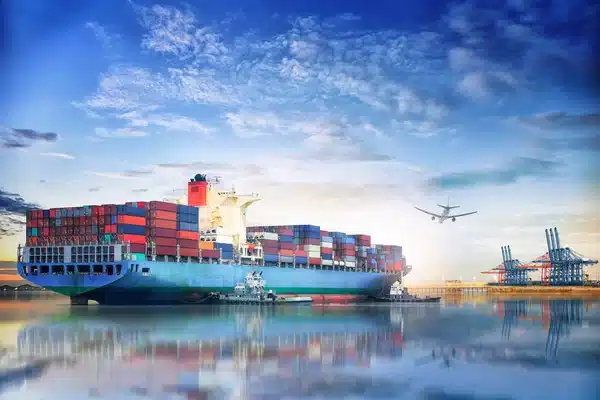In the world of international shipping, ensuring the safety and efficiency of containerized cargo is paramount. Among the many regulations that govern global trade, the Verified Gross Mass (VGM) requirement stands out as a crucial measure introduced to enhance maritime safety. Implemented by the International Maritime Organization (IMO) under the Safety of Life at Sea (SOLAS) convention, VGM is a mandatory declaration that provides the accurate weight of a loaded shipping container.
This comprehensive guide explores everything you need to know about VGM in international shipping. From its definition and importance to compliance methods and real-world applications, this article is designed to equip shippers, freight forwarders, and logistics professionals with valuable insights into container VGM.

Table of Contents
What is Container VGM?
1. Definition
Verified Gross Mass (VGM) refers to the total weight of a shipping container, including:
- The weight of the cargo inside the container.
- The tare weight (empty weight) of the container itself.
- Packaging materials and securing equipment.
2. Historical Context
The requirement for VGM was introduced on July 1, 2016, under amendments to the SOLAS convention. It was driven by the need to address maritime accidents caused by container misdeclaration.
3. Purpose
- Safety: Prevent container stack collapse on ships.
- Operational Efficiency: Ensure proper ship stowage and balance.
- Compliance: Avoid fines, delays, and shipment rejections.
Importance of VGM in Shipping
1. Enhanced Maritime Safety
Prevent overloading and ensure stability of vessels.
Reduce the risk of accidents caused by uneven weight distribution.
2. Regulatory Compliance
- Align with SOLAS regulations to avoid penalties.
- Streamline processes during port and customs inspections.
3. Operational Efficiency
- Enable accurate stowage planning for container ships.
- Minimize disruptions caused by weight discrepancies.
4. Risk Mitigation
- Avoid potential legal liabilities associated with misdeclared weights.
- Reduce damage to cargo, vessels, and port infrastructure.
How to Calculate Container VGM
1. Methods of Determination
The SOLAS convention outlines two methods for calculating VGM:
Weighing the Loaded Container:
- Use calibrated and certified weighing equipment.
- Obtain the total weight of the loaded container, including all contents and the container itself.
Weighing Cargo and Adding Tare Weight:
- Weigh all cargo items, packaging, and securing materials.
- Add the tare weight of the container (marked on the container door).
2. Tools and Equipment
Weighbridges: Large scales for measuring truck-loaded containers.
Crane Scales: Used during container lifting.
Platform Scales: Ideal for smaller shipments combined later into a container.
Global Regulations and Compliance
1. SOLAS Requirements
- VGM declaration is mandatory before a container is loaded onto a ship.
- Non-compliance may result in shipment rejection or fines.
2. Documentation
VGM Declaration Form: Includes container number, VGM, shipper details, and certification method.
Submit to the carrier and terminal operator electronically or in paper form.
3. Deadlines
- Submit VGM before the vessel loading cut-off time specified by the carrier.
4. Country-Specific Rules
While SOLAS provides a global framework, some countries may have additional requirements. For instance:
- United States: Enforces VGM through terminal operators.
- European Union: Stringent enforcement at major ports like Rotterdam and Hamburg.
- China: Requires precise electronic submission through authorized platforms.
Impacts of VGM on Global Shipping Operations
1. On Shipping Lines
- Ensures balanced container stacking and proper ship stowage.
- Improves fuel efficiency by optimizing ship load.
2. On Ports and Terminals
- Reduces delays caused by weight discrepancies.
- Enhances safety during container handling.
3. On Freight Forwarders and Shippers
- Simplifies logistics planning and execution.
- Reduces risks of fines and legal disputes.
Challenges in Implementing VGM
Cost Implications
- Investment in weighing equipment and certification processes.
- Additional administrative costs for documentation and compliance.
Logistical Issues
- Delays in weighing containers during peak shipping periods.
- Coordination challenges between shippers, carriers, and terminals.
Technological Gaps
- Limited access to electronic submission platforms in some regions.
- Inconsistencies in global digital standards.

Best Practices for VGM Compliance
Establish Clear Processes
- Define roles and responsibilities for VGM calculation and submission.
- Train staff on compliance requirements and equipment usage.
Use Certified Equipment
- Ensure weighing tools are calibrated and certified according to local and international standards.
Leverage Technology
- Adopt digital tools for VGM submission to carriers and terminals.
- Use blockchain for secure and transparent documentation.
Partner with Reliable Logistics Providers
- Work with freight forwarders experienced in VGM compliance.
- Seek guidance from professionals to navigate country-specific requirements.
Case Studies: VGM in Action
- Implements advanced automation and electronic submission systems.
- Reduced container handling delays by 15% after adopting VGM standards.
- Uses AI-powered tools to predict discrepancies in container weights.
- Increased compliance rate to over 98% within a year.
- Integrated VGM submission into national customs platforms.
- Streamlined the export process for thousands of manufacturers.
How Tonlexing Can Help
At Tonlexing, we provide tailored logistics solutions to ensure seamless VGM compliance. Our services include:
Weighing Services: Access to certified equipment at key ports and terminals.
Documentation Assistance: Expert support in preparing and submitting VGM declarations.
End-to-End Logistics: Comprehensive solutions for shipping, customs clearance, and delivery.
Real-Time Tracking: Monitor your container’s status and compliance in real-time.
Understanding and complying with VGM requirements is crucial for safe and efficient container shipping. From accurate weight determination to streamlined documentation, VGM plays a pivotal role in enhancing maritime safety and operational efficiency.
By staying informed about global regulations and adopting best practices, businesses can navigate the complexities of international shipping with confidence. Partnering with experienced logistics providers like Tonlexing ensures not only compliance but also peace of mind.
For professional guidance and end-to-end shipping solutions, contact Tonlexing today and make your international logistics seamless and efficient.


